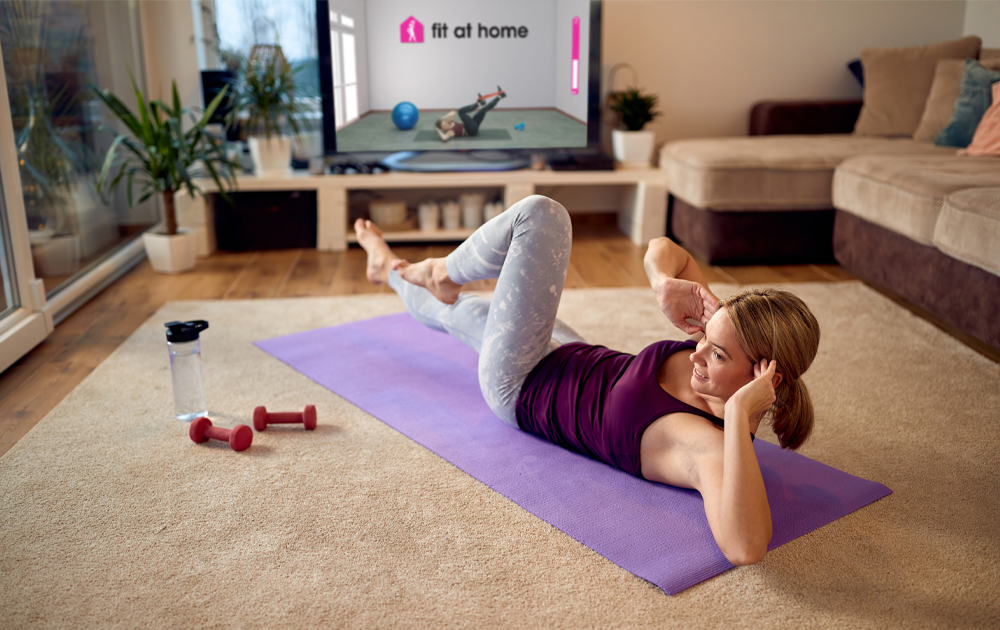Are you looking for an effective and challenging training method? Then interval training might be exactly what you need! Interval training is a form of exercise where you alternate periods of intense effort with periods of recovery. It is a popular and versatile training method that helps improve your fitness level, burn fat, and enhance overall performance. We will delve deeper into interval training, including its benefits, different training methods, and how to structure an interval training session for maximum results.
What is interval training?
Interval training is a training method where you alternate between periods of high-intensity exercise and periods of lower intensity or recovery. The aim of interval training is to elevate your heart rate and push your body, followed by a recovery period to lower your heart rate before repeating the cycle. This pattern of intense effort and recovery is repeated throughout the training session.

The benefits of interval training
This type of training can be applied to various types of exercises, including cardio workouts, strength training, and even sports-specific training. The benefits of interval training are numerous and can significantly impact overall fitness and performance. Here are some of the key benefits:
Improves fitness level
Interval training is an effective way to enhance your cardiovascular fitness. The alternating high and low-intensity periods stimulate your heart and lungs, making them stronger and more efficient.

Fat burning
Interval training not only burns calories during the workout but also increases your metabolism, leading to continued fat burning even after the session is over.
Time-efficient
One of the great advantages of interval training is its time efficiency. By alternating high-intensity efforts with recovery periods, you can complete a highly effective workout in a shorter amount of time compared to longer, moderate-intensity exercises.

Builds strength
Interval training can also help build muscle strength. The intense efforts stimulate muscle fiber growth and contribute to overall strength and power development.
Variation and enjoyment
Interval training offers a wide variety of exercises and training methods. You can combine different activities and intensities to keep it interesting and enjoyable. This variety helps prevent training plateaus and keeps you motivated.
Different training methods for interval training
There are various types and methods of interval training. By alternating these methods, you ensure that you challenge yourself and stay motivated.
HIIT (High Intensity Interval Training)
HIIT is a popular form of interval training where you alternate short periods of maximum effort with short recovery periods. For example, sprinting for 30 seconds followed by 30 seconds of walking or jogging. This pattern is repeated for a specific duration.
Circuit training
Circuit training is a form of interval training where you perform different exercises at various stations. You work at each station for a set amount of time and then move to the next station with minimal rest in between. This is an effective way to improve both strength and cardiovascular fitness.

Tabata
Tabata is a specific form of HIIT developed by Japanese researcher Dr. Izumi Tabata. It involves 20 seconds of maximum effort followed by 10 seconds of rest, repeated for a total of 4 minutes. Tabata is an intense form of interval training that provides rapid improvements in cardiovascular fitness.
Fartlek
Fartlek, a Swedish word meaning “speed play,” is an unstructured form of interval training where you vary the intensity based on your surroundings. For example, sprinting to a tree and then recovering by jogging slowly until the next target. It’s a playful and flexible training method that you can do outdoors.

Structuring an interval training session
Building an interval training session requires a gradual approach to allow your body to adapt to the intensity. Start with a proper warm-up to prepare your muscles and elevate your heart rate. Then, begin with short intervals of high-intensity exercise followed by recovery periods. As your fitness level improves, gradually increase the duration and intensity of the intervals.
It is important to incorporate sufficient rest between training sessions to allow your body to recover. Listen to your body and adjust the intensity based on your fitness level and training goals.
Tips for an effective interval training session
- Warm up properly: It’s crucial to warm up your muscles and elevate your heart rate before starting an intense interval training session. Engage in light cardio activities such as jogging or cycling, followed by dynamic stretching to loosen up your muscles.
- Adjust intervals based on your fitness level: Beginners can start with shorter intervals and longer recovery periods, while more advanced athletes can perform longer intervals with shorter recovery periods. Tailor the intervals based on your current fitness level and goals.
- Vary intensity and duration: Experiment with different intensity levels and durations of the intervals. For example, you can alternate between high, moderate, and low-intensity intervals to keep your training challenging and interesting.
- Stay hydrated: Interval training can be intense, so make sure to drink enough water to stay hydrated. Drink water before and after the training session, and take small sips during the recovery periods if needed.
- Gradually progress: If you are new to interval training, gradually increase the intensity and duration to avoid injuries. Start with shorter intervals and longer recovery periods, and progressively increase the intensity and duration as you become stronger and fitter.

Working out with Fit at Home
You no longer have to go to the gym to get fit. With Fit at Home, you can exercise whenever it suits you. This reduces the barrier to starting an exercise routine and helps you achieve your goals sooner.
We offer various workouts from different trainers. Whether you want to lose weight, work on your core, or improve your strength, it’s all possible. Additionally, you can easily search for the workouts you’re looking for. Simply click on categories and find a workout that suits your needs for the day! The Fit at Home app is available 24/7 on-demand. Of course you can also use Fit at Home online on your smartphone, tablet or laptop.


Interval workout at home
Interval training can be easily done at home without any special equipment. Here’s a simple and effective interval workout that targets both cardiovascular fitness and muscular strength:
> Warm-up (5 minutes): Start with a brief warm-up to get your body prepared for the workout. Perform some light cardio exercises like jogging in place, jumping jacks, high knees, or skipping.
> Workout: The following workout consists of four exercises. Perform each exercise at high intensity for 40 seconds, followed by 20 seconds of rest. Complete the circuit of four exercises, and then take a 1-minute rest. Repeat the circuit for a total of 3-4 rounds.
- Bodyweight squats:
- Stand with your feet shoulder-width apart.
- Lower your body into a squat position by bending your knees and pushing your hips back.
- Keep your chest up and back straight.
- Push through your heels to return to the starting position.
- Push-ups:
- Place your hands shoulder-width apart on the floor, and extend your legs straight behind you. This is the plank position.
- Lower your chest towards the ground by bending your elbows.
- Push through your palms to raise your body back up to the starting position.
- Start in a plank position with your hands directly under your shoulders.
- Bring one knee towards your chest, then quickly switch legs in a running motion.
- Keep your core engaged and your back flat throughout.
- Burpees:
- Begin in a standing position.
- Drop into a squat position and place your hands on the floor.
- Kick your feet back into a plank position.
- Perform a push-up, then jump your feet back towards your hands.
- Explosively jump up, reaching your arms overhead.
> Cool-down (5 minutes): After completing the intervals, cool down to bring your heart rate down gradually. Perform some static stretches for major muscle groups, such as hamstrings, quadriceps, calves, chest, and shoulders.
Remember to stay hydrated throughout the workout and listen to your body. If you’re a beginner or have any health concerns, modify the exercises as needed or consult with a fitness professional to ensure the workout is suitable for you.